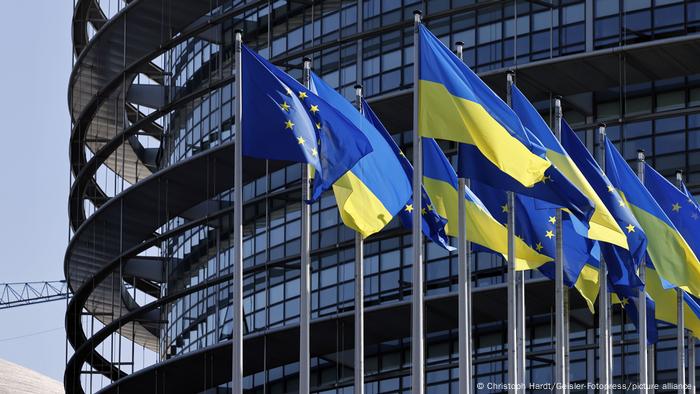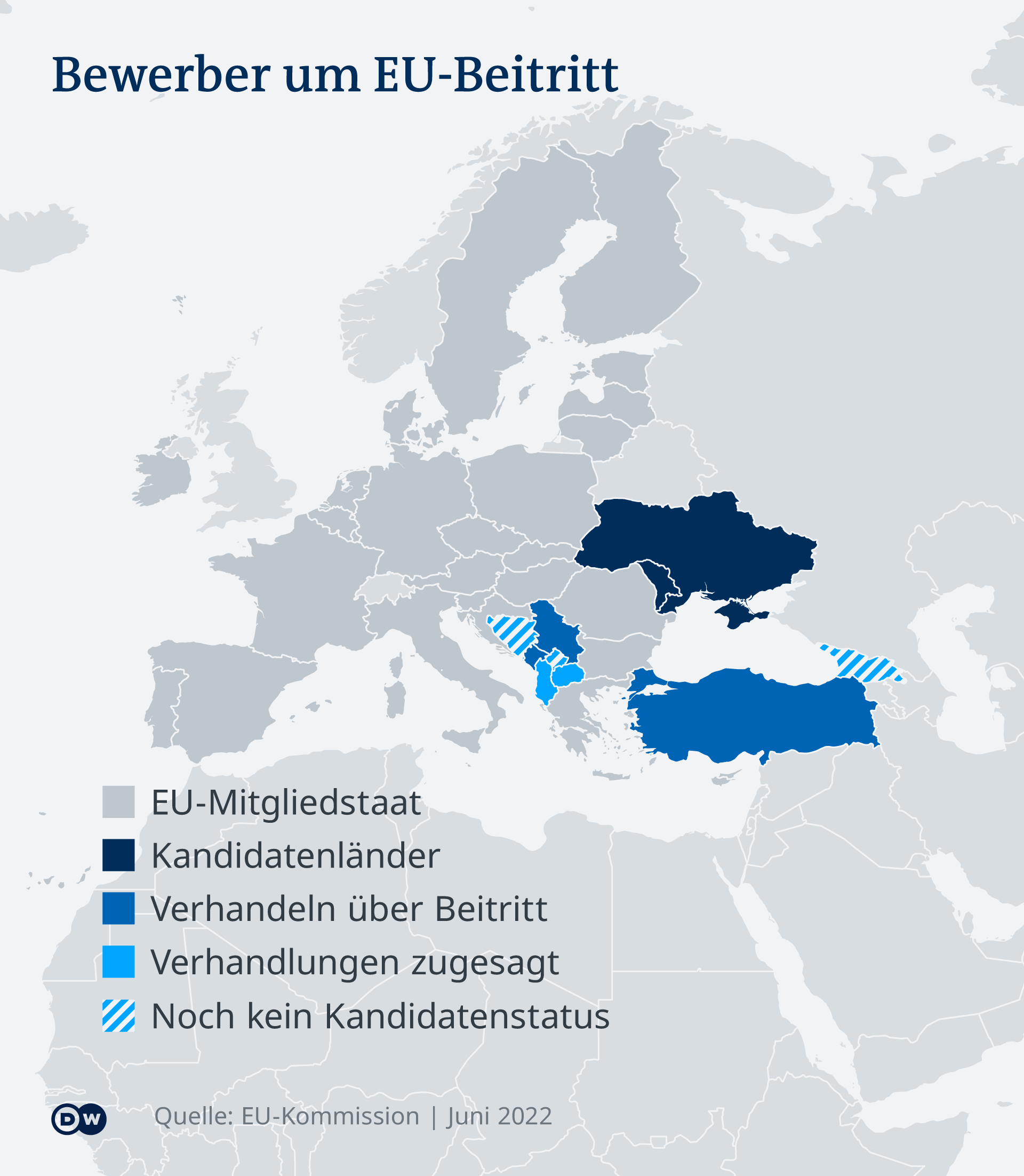EU summit grants candidate status to Ukraine and Moldova. One step on the complex path to membership. What's next? Where do other applicants stand?

Candidate for accession: Ukrainian and European flags in front of the EU Parliament in Strasbourg
Accession to the European Union is the norm, not the exception. Of the 27 member states today, 21 have joined the original founding members (Netherlands, Belgium, Luxembourg, France, Italy, Germany) in several waves since 1958 over the decades. Paragraph 49 of the EU Treaty of Lisbon regulates what is actually a fairly simple procedure.
Three steps to accession
1. Any European state can apply for membership if it respects the values of the EU such as democracy, the rule of law and human rights.
2. The Council of the European Union (the representation of the member states) unanimously approves this proposal and starts negotiations. The EU Commission issues a recommendation. The European Parliament must agree. Complex membership criteria must be observed.
3. The applicant and the Council sign an international accession treaty that must be ratified by all member states. As soon as it comes into force: full membership! Blush!
In the course of the accession negotiations, which can last a few years or several decades, depending on the size and condition of the applicant, reforms are implemented and EU standards are adapted to administration, the judiciary and the economy. Each accession step, which is broken down into 35 chapters, must be unanimously approved by all member states.

The The EU has repeatedly set new criteria and reform steps for all applicants. The internal structure of the EU has also been adjusted several times in order to remain capable of acting with the growing number of members.
Who is how far?
The current applicants can be divided into four groups:
1. States preparing to apply for membership: Kosovo
2. States that have submitted an application: Bosnia-Herzegovina, Georgia
3. States that are official candidates because their application was positively evaluated: Albania, North Macedonia, and now new, Ukraine and Moldova
4. Countries with which accession negotiations are being conducted: Serbia, Montenegro, Turkey
Patience is necessary
Finland needed only three years for the complete process in the mid-1990s. Turkey has been negotiating since 2005 with no prospect of progress. The EU keeps emphasizing that it is mainly in the hands of the member states how quickly they implement reforms in order to climb the next step on the ladder. On the other hand, EU members can arbitrarily block the process, as is currently the case with Bulgaria, which uses flimsy arguments to prevent North Macedonia from starting long-overdue accession negotiations.

In order to sweeten the waiting time, there are a number of cooperation agreements, such as the so-called Eastern Partnership, to initiate reforms and provide economic aid outside of the formal accession process. In addition, the candidates would have to settle disputes among themselves and territorial conflicts with neighboring countries before accession. This is likely to be very difficult in the case of Ukraine, but also applies to Serbia and Kosovo.
Fun Facts
By the way, the former GDR was the fastest to join. It joined the EU in 1990 without formal negotiations because it became part of EU member Federal Republic of Germany.
Iceland is the only country to have withdrawn its application since 2015. The United Kingdom of Great Britain and Northern Ireland is the only country to have withdrawn from the EU so far, leaving in 2020.